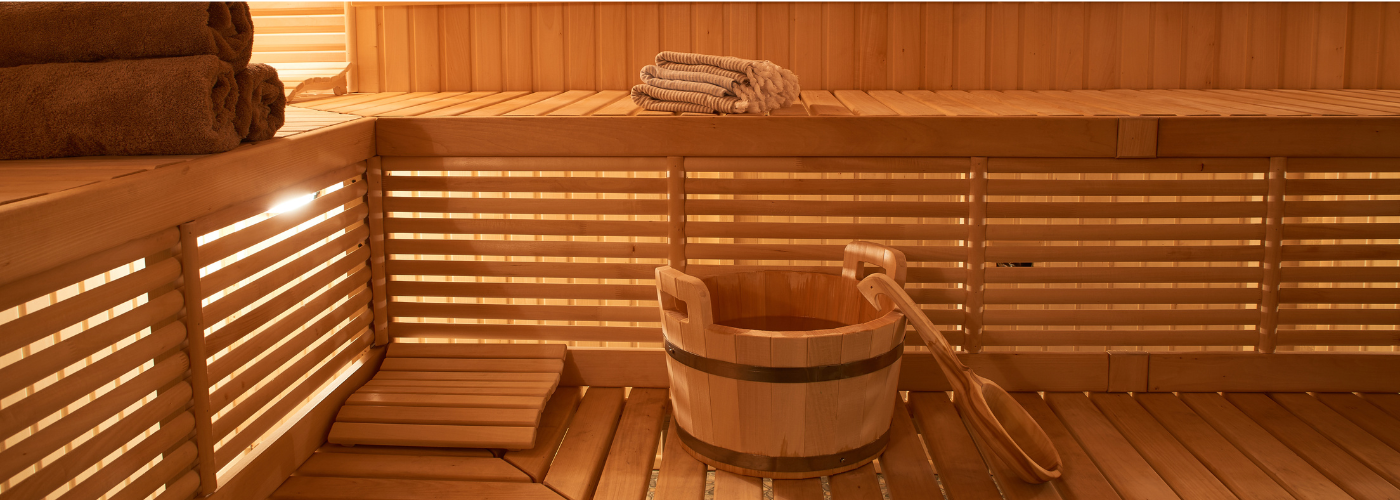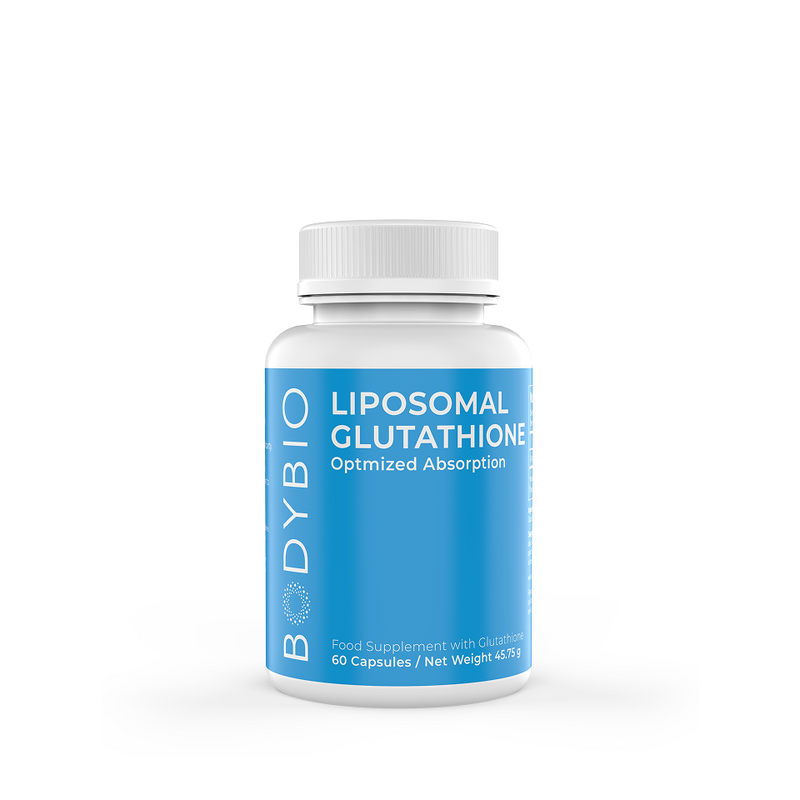7 Sauna Health Benefits for Heart Health, Muscle Recovery, Detox, and More
Key Takeaways:
There’s something uniquely comforting about stepping into a warm, wood-lined sauna or basking under gentle infrared panels. While the immediate sensation is one of relaxation, the benefits extend far beyond mere comfort. Regular sauna use can support heart health, aid muscle recovery, balance stress responses, and even offer metabolic perks. In this guide, we’ll walk through what a sauna is, explore how different types work, highlight the primary benefits, backed by key research, and provide practical tips on making sauna therapy a safe, effective part of your wellness routine.
Table of Contents:
-
What Is a Sauna?
-
Benefits of Sauna Therapy
-
Sauna Basics: How It Works
-
Practical Tips for Safe and Effective Sauna Use
-
Integrating Sauna Therapy into Your Wellness Routine
What Is a Sauna?
At its simplest, a sauna is a dedicated space designed to expose your body to controlled heat. Traditional saunas, often called Finnish saunas, use a heater or hot rocks to heat the air to 160°F–200°F, creating a dry heat designed to get you sweating. Infrared saunas don’t use stones or a heater, instead, they use panels that emit infrared light to penetrate the skin more directly, warming your muscles and connective tissues while keeping air temperatures between 120°F and 140°F. Both methods trigger a cascade of effects in your body: increased circulation, sweating, and a rise in heart rate—similar to moderate exercise (but no muscle stimulation).
Types of Saunas
-
Traditional Saunas: These rely on heated air and sometimes steam (when water is poured over hot stones). The intense, dry heat warms you from the outside in, causing rapid perspiration and a quick rise in core temperature.
-
Infrared Saunas: Using infrared wavelengths, these saunas gently heat deeper tissues without pushing the ambient air to extreme temperatures. The result is a more tolerable heat that can be sustained for longer sessions, especially useful for people who find traditional sauna heat too intense.
Benefits of Sauna Therapy
Heat therapy offers a wide range of advantages beyond just relaxation. Below are the key ways saunas support your health—from cardiovascular improvements and muscle recovery to stress management and metabolic balance.
1. Cardiovascular Health
One of the most compelling reasons people turn to saunas is the positive impact on the heart and blood vessels. In a long-term Finnish study of over 2,300 men, those who used a sauna four to seven times per week experienced a noticeably lower risk of fatal cardiovascular events compared to men who went just once a week.
Scientists believe this regular heat exposure mimics a moderate workout, gently elevating heart rate and promoting better blood flow without placing stress on joints. Over time, these effects can condition your cardiovascular system, helping keep your blood pressure and arterial stiffness (a measure of how flexible your arteries are) in check.
2. Lowering Blood Pressure and Reducing Pain
For individuals managing high blood pressure or chronic pain, infrared saunas can be extremely beneficial. Unlike traditional saunas, infrared heat penetrates more deeply at lower air temperatures. In clinical observations, people with hypertension saw an average drop of around 12 mmHg systolic (the pressure when the heart contracts) and 6 mmHg diastolic (the pressure when the heart relaxes) after a few weeks of regular infrared sessions. This gentle but consistent heat helps widen blood vessels and improve circulation, leading to reduced pain from conditions such as arthritis and fibromyalgia. Since the air feels milder, those who are sensitive to intense heat can still enjoy the benefits without discomfort.
Note: mmHg is a unit of pressure originally based on how much pressure is needed to raise a column of mercury by one millimeter. In medical contexts—like blood pressure readings—“systolic x mmHg” refers to the pressure in your arteries when your heart contracts, and “diastolic x mmHg” is the pressure when your heart relaxes.
So, for example, a reading of 120/80 mmHg means 120 millimeters of mercury during contraction and 80 mmHg during relaxation. A healthy blood pressure is generally considered to be at or below 120/80 mmHg, but individual blood pressure targets can vary depending on gender, age, weight, and health conditions.
3. Enhanced Muscle Recovery
Whether you’re a weekend warrior or a competitive athlete, muscle soreness and fatigue can slow you down. Studies involving post-workout infrared sauna sessions—typically 20 to 30 minutes immediately after exercise—show faster reductions in muscle soreness and improved recovery of muscle function. The deep heat aids in clearing lactic acid, bringing oxygen and nutrients to fatigued fibers, and stimulating heat-shock proteins that support cellular repair. This means you can bounce back more quickly and maintain a consistent training schedule. (Or just survive walking down the stairs after leg day!)
4. Stress Relief and Autonomic Balance
Heat from a sauna does more than warm your body; it can shift your nervous system toward a more restorative state. Regular sauna use has been linked to better heart-rate variability (HRV), an indicator of a balanced autonomic nervous system. Higher HRV suggests stronger parasympathetic activity—the “rest-and-digest” side of your nervous system—helping you recover from daily stressors, regulate emotions more effectively, and improve sleep quality.
5. Metabolic Support and Blood Sugar Management
People with type 2 diabetes may find sauna therapy a helpful adjunct to their usual care. Clinical observations show that a few months of consistent infrared sauna sessions can lead to modest improvements in fasting blood glucose and insulin sensitivity. While saunas aren’t a substitute for diet and exercise, the added heat stress seems to kick-start metabolic pathways that support healthier blood sugar levels.
6. Detoxification and Skin Health
Sweating in a sauna flushes out water and electrolytes and also helps eliminate certain toxins, such as heavy metals and persistent organic pollutants, through the skin. In fact, one study found that elements like arsenic, cadmium, lead, and mercury appear at higher concentrations in sweat compared to blood or urine. While the liver and kidneys handle most detoxification, the skin provides a secondary route, and increased sweating can reduce overall toxin burden. Additionally, the deep-cleansing effect can improve skin tone, helping your complexion look clearer and more radiant.
You can further support this detox process by taking Liposomal Glutathione before or after your sauna session—which help promote liver health and cellular-level detoxification. The deep-cleansing effect can improve skin tone, helping your complexion look clearer and more radiant. Just make sure you’re drinking plenty of water and replenishing your electrolytes too.
Sauna Basics: How It Works
When your body is exposed to elevated temperatures, whether through dry heat or infrared light, your skin’s thermoreceptors signal for a bunch of responses:
-
Increased Heart Rate: Your heart can speed up to 100–150 beats per minute, similar to moderate-intensity exercise, boosting circulation and oxygen delivery.
-
Vasodilation: Blood vessels near the skin’s surface widen, helping dissipate heat and improve blood flow through your limbs.
-
Sweating: Profuse sweating helps regulate core temperature and flushes out water-soluble toxins.
-
Heat-Shock Protein Production: These proteins aid in cellular repair, critical for muscle recovery and reducing inflammation.
-
Autonomic Shift: Over time, the repeated heat stress encourages a shift toward parasympathetic dominance, supporting better stress resilience.
How to Use a Sauna:
-
Entering and Seating: Step into the sauna and choose a bench height based on your heat preference—lower benches are cooler, higher benches are hotter. Place a towel underneath you to absorb sweat and maintain hygiene.
-
Acclimation: Sit upright for the first minute or two to let your body adjust before reclining or leaning back.
-
Accessories: In a traditional sauna, use a ladle to pour water over hot stones for steam, adjusting humidity to your comfort. In an infrared sauna, a built-in heater warms the panels, and most units include a timer and temperature controls—set these before starting your session.
Recommended Time & Temperature:
-
Traditional Saunas: Beginners should start at 150°F for 5–10 minutes. As your heat tolerance builds, aim for 15–20 minutes at 160°F–180°F. Most seasoned users find 10–15 minutes at 180°F comfortable.
-
Infrared Saunas: Beginners can begin at 120°F for 10–15 minutes, then progress to 20–30 minutes at 120°F–140°F. Infrared heat feels gentler, which allows newbies to start using longer sessions without overheating.
-
Heart Rate Range: During sauna use, your pulse may rise into the 100–120 bpm range, similar to brisk walking. Always exit if you feel dizzy or unwell.
Practical Tips for Safe and Effective Sauna Use
Now that you understand how saunas work, these practical guidelines will help you use sauna therapy safely and effectively:
Hydration and Electrolytes
-
Stay Hydrated: Drink 16–20 ounces of water before and after each sauna session to replace what you lose in sweat.
-
Electrolyte Support: Supplement with ReMineralize and e-lyte to maintain optimal electrolyte and mineral balance before, during, and after your sauna session.
Listening to Your Body
-
Warning Signs: If you feel dizzy, unusually fatigued, or lightheaded, exit the sauna and allow your body to cool down gradually.
-
Cool-Down Breaks: During longer sessions, step out briefly and let your head rest outside the sauna for a minute or two if you sense your body overheating. It’s more than okay to take breaks, especially throughout a longer sauna session.
Post-Sauna Care
-
Gentle Stretching: Follow your session with light stretches or a cool shower to normalize your core temperature and ease muscle tension.
-
Recovery Tools: Foam rolling or self-massage can further aid muscle recovery, especially after intense workouts.
Special Considerations
-
Consult a Provider: If you have cardiovascular issues, low blood pressure, or are pregnant, get medical clearance before beginning sauna therapy.
-
Older Adults: If you’re over 50 and new to saunas, consider a resting electrocardiogram (ECG) or stress test to ensure your heart can handle the higher temperatures.
Integrating Sauna Therapy into Your Wellness Routine
Sauna bathing is more than a luxury, it’s a practical, science-supported strategy for enhancing multiple areas of your health. So, whether you’re drawn to soothing sore muscles after exercise, seeking blood pressure support, or simply craving stress relief, saunas are a versatile and relaxing tool you can incorporate into your health and wellness routine.
Over time, consistent sauna use can become a cornerstone of long-term wellness: a warm, restorative habit that supports heart health, aids recovery, calms the nervous system, and bolsters metabolic function. Why not light a few candles, play soft music, and turn your sauna routine into a self-care ritual?
Ready to elevate your sauna experience? Stock up on essential support for before, during, and after your sessions!
-
BodyBio Liposomal Glutathione: Help safeguard liver health and promote cellular-level detoxification to complement your sauna sessions.
-
BodyBio ReMineralize & e-lyte: Maintain optimal hydration and electrolyte balance so you can sweat confidently and recover fully.








